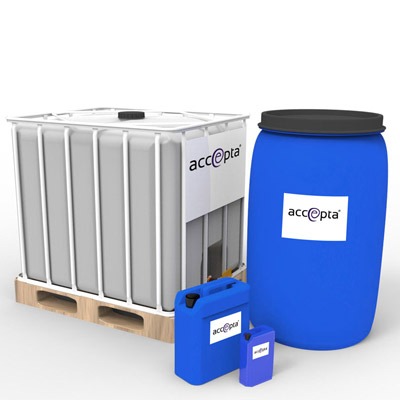Understanding the Importance of Foam Control in Food and Drink Processing
Understanding the Importance of Foam Control in Food and Drink Processing
Blog Article
A Comprehensive Guide to Implementing Foam Control Solutions in Your Procedures
Efficient foam control is a critical element of operational performance that frequently goes ignored. Recognizing the ins and outs of foam generation can significantly influence both efficiency and item quality. By examining crucial aspects such as application compatibility and workers training, companies can maximize their foam monitoring initiatives.
Understanding Foam Difficulties
Foam difficulties are a substantial problem throughout different markets, affecting functional efficiency and item high quality. The development of excessive foam can prevent procedures such as mixing, transportation, and storage space, resulting in increased downtime and waste. In sectors like food and drink, drugs, and petrochemicals, foam can disrupt manufacturing lines, creating product incongruities and contamination risks.
Moreover, foam can obstruct tools functionality, resulting in costly repair work and upkeep. For circumstances, in wastewater therapy, foam can interrupt clarifier operations, causing reduced treatment performance and governing conformity concerns.
Understanding the underlying sources of foam generation is crucial for efficient administration. Variables such as surfactants, temperature level fluctuations, and anxiety levels can all contribute to foam production. Identifying these aspects enables markets to apply targeted techniques that decrease foam formation while keeping item stability.
Kinds Of Foam Control Solutions

Mechanical solutions entail using devices such as foam skimmers or defoamers. These tools literally remove foam from the surface area of fluids, therefore stopping overflow and preserving ideal degrees in reactors and storage tanks. Chemical remedies, on the other hand, consist of the application of defoaming agents-- materials that interfere with the foam framework, bring about its collapse. These agents can be silicone-based, natural, or aqueous, each offering unique benefits depending upon the application environment.
Last but not least, operational approaches concentrate on process changes. This may involve modifying tools parameters, such as temperature level and stress, or transforming the flow rates of fluids to minimize foam generation. In addition, applying great housekeeping methods can additionally minimize foam formation by minimizing pollutants that add to foam stability.
Selecting the appropriate foam control remedy entails examining the certain requirements of the operation, consisting of the kind of procedure, the qualities of the materials included, and safety and security considerations.
Picking the Right Products
Choosing the best foam control items calls for a thorough understanding of the particular application and its one-of-a-kind obstacles. Variables such as the type of foam, the environment in which it happens, and the desired end result all play critical duties in product selection. Foam Control. In markets such as food processing, it is crucial to pick food-grade defoamers that abide with safety laws while properly taking care of foam.
Furthermore, consider the viscosity of the fluid where the foam trouble exists. Some items are formulated for low-viscosity applications, while others are tailored for thicker liquids. Compatibility with existing procedures is one more crucial element; the selected foam control agents must integrate effortlessly without interfering with general procedures.
One more critical factor is the approach of application. Some items might call for dilution, while others can be used straight. Assessing the simplicity of use and the needed dose can offer understandings into the product's performance and cost-effectiveness.
Implementation Approaches
Successful implementation techniques for foam control options call for a methodical technique that lines up item option with functional requirements. The initial step involves a detailed analysis of the processes where foam occurs, determining specific locations that require treatment. By involving cross-functional teams, including design, top quality, and production assurance, companies can collect insights that inform the option of the most reliable foam his comment is here control items.
Following, it is essential to establish clear objectives for foam reduction, ensuring that these objectives are measurable and achievable. This may include specifying acceptable foam degrees and the timelines for application. Training workers on the properties and application techniques of picked Going Here foam control representatives is equally essential, as correct usage is important for optimal results.
Furthermore, incorporating foam control remedies right into existing workflows requires careful preparation. Ultimately, a well-structured technique will enhance operational effectiveness while properly handling foam-related challenges.
Monitoring and Evaluating Performance
Surveillance and assessing the efficiency of foam control options is crucial for making certain that implemented strategies yield the wanted outcomes. This process includes methodical data collection and evaluation to analyze the efficiency of foam control agents and methods. Trick performance signs (KPIs) need to be developed before implementation, enabling a clear baseline versus which to determine progression.

Evaluating effectiveness likewise requires routine evaluations of foam control procedures and representative effectiveness. This can be completed through sampling and screening, permitting drivers to identify if existing solutions are fulfilling operational demands. Moreover, it is essential to obtain comments from staff member who connect with these systems daily, as their insights can expose operational nuances that measurable information may neglect.

Ultimately, a structured monitoring and examination structure aids identify essential adjustments, ensuring that foam control options stay efficient, affordable, and lined up with organizational goals.
Verdict
In conclusion, efficient foam control options are crucial for optimizing operational performance and preserving item quality. A thorough understanding of foam obstacles, integrated with the option of ideal products and execution strategies, assists in the successful management of foam generation.
Applying great housekeeping techniques can also alleviate foam development by lowering impurities that contribute Going Here to foam security.
Selecting the right foam control items calls for a detailed understanding of the certain application and its one-of-a-kind obstacles (Foam Control).Effective implementation approaches for foam control options require a methodical technique that lines up product choice with operational demands.In final thought, effective foam control solutions are vital for enhancing functional effectiveness and maintaining item quality. An extensive understanding of foam obstacles, incorporated with the selection of proper products and execution approaches, facilitates the effective administration of foam generation
Report this page